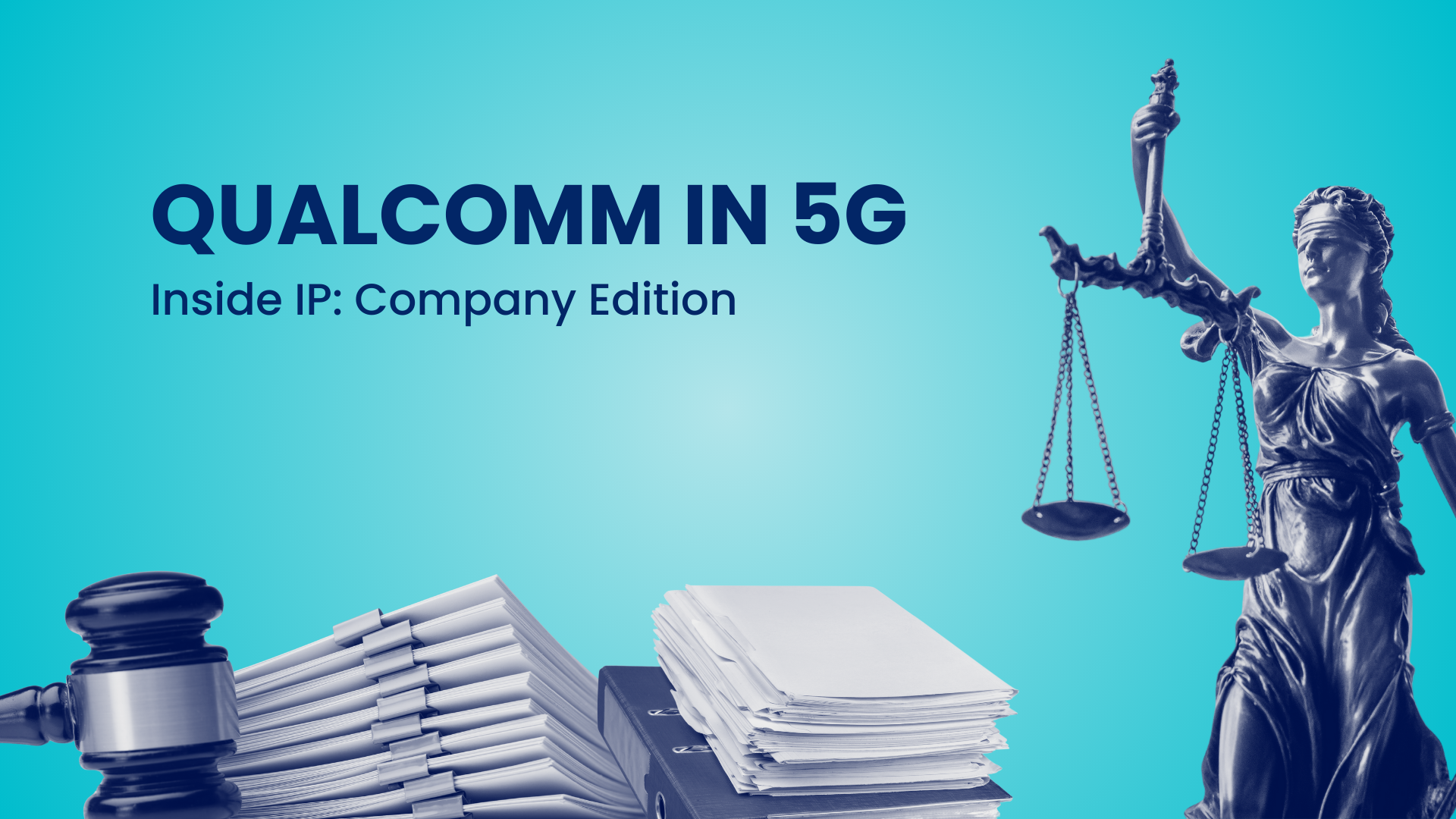In the fiercely competitive realm of wireless communication, where innovation dictates leadership, companies like Qualcomm stand as titans. Far from being a mere participant, Qualcomm has consistently shaped the very fabric of the industry, pioneering advancements from 3G to the emerging frontiers of 6G. Its enduring influence is not just a testament to its technological prowess but also to a meticulously crafted intellectual property (IP) strategy that underpins its market dominance. Analyzing Qualcomm’s patent portfolio, management, and strategic activities reveals a masterclass in leveraging innovation for sustained competitive advantage.
Bolstering Innovation: Qualcomm’s Defensive IP Stature
A robust IP portfolio serves not only as a shield but also as a powerful deterrent. Qualcomm’s patents have proven exceptionally effective in defining the boundaries of innovation, particularly in core wireless communication technologies. Their strength is underscored by their frequent use in rejecting patent applications from other companies, indicating that competitors are often working on similar, yet previously patented, concepts. This demonstrates Qualcomm’s foundational contributions and the breadth of its patent protection.
For instance, a number of leading technology companies have seen their patent applications impacted by the existing strength of Qualcomm’s portfolio. This highlights the pervasive influence of Qualcomm’s innovations across the industry.
Several companies are attempting innovations similar to those of Qualcomm, as indicated by the number of citations from Qualcomm’s own patents. LG Electronics Inc. leads this list, with more than seven of its innovations being cited. Following them is Huawei Technologies Co., Ltd., which has received around half a dozen citations.
Other companies in related fields also show overlapping innovation efforts. Telefonaktiebolaget LM Ericsson has a handful of citations from Qualcomm patents. Additionally, both NEC Corporation and Aptiv Technologies AG have each been cited several times, indicating their work in similar technological areas.
Beyond influencing similar filings, Qualcomm’s patents have also contributed to the discontinuation of patent applications by other entities. This further underscores the commanding position of Qualcomm’s IP, which can lead to the abandonment of efforts by others trying to patent overlapping technologies.
Qualcomm’s extensive patent portfolio has had a notable impact on the patent applications of several major companies across different industries. Among those affected are prominent names such as AT&T Intellectual Property, Fujitsu Limited, and Guangdong Oppo Mobile Telecommunications Corp., Ltd. Additionally, the portfolio has impacted applications from Hewlett-Packard Development Company, L.P., and NEC Corporation.
Strategic Licensing Potential: High-Impact Patents
Identifying patents with high licensing potential is a hallmark of sophisticated IP management. Qualcomm’s portfolio includes several patents that have been instrumental in asserting its technological leadership. These patents, selected from the 2023 set, have been actively cited by examiners to reject multiple patent applications from a diverse group of companies, including automotive giants like Ford and technology innovators such as NEC Corp and Zoox. This suggests their significant value and broad applicability across various sectors, integrating wireless communication.
Among these, the patent [US11562550B1] stands out, having been leveraged to provide rejections for the highest number of competitor applications, showcasing its exceptional strength and strategic importance
.A number of specific patents have been instrumental in the rejection of competitor applications. Patent [US11562550B1] has had the most significant impact, leading to the rejection of a handful of competitor applications. Following this, a group of patents, including [US11546029B2], [US11546938B2], and [US11630197B2], were each responsible for the rejection of a few competitor applications. Additionally, patent [US11543783B2] led to the rejection of a couple of applications.
Shaping Standards: Qualcomm’s Role in 5G Evolution
Qualcomm’s influence extends far beyond its patent portfolio; it is a key architect of the global standards that define modern telecommunications. The company has played an indispensable role in the development of 5G technology, demonstrating its commitment to collaborative innovation and industry advancement.
During the development phase of 5G up to Release 17, Qualcomm submitted nearly 5,800 documents, with over 690 of these documents officially approved. This significant contribution reflects Qualcomm’s substantial influence in shaping the foundational standards of 5G. A closer look reveals that a majority of Qualcomm’s research efforts, specifically more than 460 documents, were dedicated to the User Equipment (UE) technical category, alongside over 170 documents related to infrastructure aspects. This dual focus underscores Qualcomm’s comprehensive approach to advancing both the user and network sides of mobile technology.
Furthermore, Qualcomm holds a substantial share of declared patents across key 5G domains:
- In eMBB (enhanced Mobile Broadband), critical for high-speed data, Qualcomm holds over 20% of approximately 15,000 declared patents.
- For URLLC (Ultra-Reliable Low Latency Communication), vital for applications like autonomous vehicles, Qualcomm commands about 16% of roughly 12,000 declared patents.
- In MIMO (Multiple Input Multiple Output) technology, enhancing network capacity, Qualcomm holds over 13% of the approximately 4,000 declared patents.
These figures illustrate Qualcomm’s prominent role in driving the evolution of 5G and solidifying its leadership in next-generation mobile networks.
Pioneering Minds: The Architects of Qualcomm’s Innovation
Behind every groundbreaking innovation is a team of visionary inventors. Qualcomm’s success is deeply rooted in the continuous contributions of its top inventors, who have propelled the company to the forefront of wireless communication, from 3G to the foundational work on 6G. These experts have not only pioneered new technologies but have also been instrumental in standardizing the innovations that define the telecommunications landscape today.
Among the notable figures are:
- Wanshi Chen: A key contributor to LTE (Long-Term Evolution) and 5G New Radio (NR) research, design, and standardization since 2006.
- Tao Luo: With contributions to wireless communications since 2004, playing a crucial role in Qualcomm’s sustained dominance.
- Peter Gaal: An extensive contributor to wireless communication since 1999, ensuring Qualcomm remains a leader in high-performance communication technologies.
- Hao Xu: Heading Qualcomm Research China since 2003, overseeing critical R&D efforts from 3G to 6G technologies.
- Tingfang Ji: As the Head of Qualcomm’s flagship 5G program since 2003, driving the adoption and refinement of 5G technologies across industries.
- Junyi Li: An expert in OFDMA, D2D (Device-to-Device), V2V (Vehicle-to-Vehicle), and mmWave communication, positioning Qualcomm at the cutting edge of next-generation communication systems.
This group of leading inventors highlights Qualcomm’s strategic focus on both the development and standardization of groundbreaking technologies, ensuring its continued role as a pivotal player in the telecommunications industry.
Expanding Horizons: Qualcomm’s Strategic Market Entry
Qualcomm is strategically diversifying its reach by targeting new markets, notably the automotive sector. This expansion leverages its core strengths in chipsets and wireless communication. The company’s significant investment in vehicle technologies, such as Advanced Driver-Assistance Systems (ADAS) and vehicular communication, positions it to capitalize on the growing demand for autonomy and real-time connectivity in vehicles. Qualcomm has fortified this new frontier with a robust portfolio of approximately 170 patents specifically related to these automotive advancements.
While Qualcomm has historically licensed its IP to hundreds of companies, it has begun forming strategic alliances within the automotive industry. A notable collaboration includes Harman, which is utilizing Qualcomm’s Snapdragon Digital Chassis for its Telematics Control Units (TCU) in automobiles. This strategic move suggests a potential dual benefit for Qualcomm: not only selling its advanced chips to automotive companies but also exploring opportunities to license its specialized patents to manufacturers integrating ADAS and vehicular communication technologies. This approach could unlock new revenue streams and cement Qualcomm’s position in the rapidly evolving smart automotive ecosystem.
Global Footprint: Patent Filing Trends and Strategic Jurisdictions
Qualcomm’s patent filing activities reflect a sophisticated global IP strategy, with a clear focus on key markets. Its filing trends demonstrate a strong upward trajectory through 2021, followed by a modulated pace in subsequent years across major jurisdictions.
The United States has consistently been a primary focus for Qualcomm’s patent filings, peaking at over 10,000 filings in 2021. Significant activity was also observed in China, with more than 3,200 filings in 2021, and in European Patent filings, which reached approximately 3,270 in the same year. Other key jurisdictions, such as Korea and Brazil, also showed notable filing numbers during this period. While recent years show a modulated pace of new filings, the historical breadth of its portfolio across these regions remains evident.
Patent filings across several major jurisdictions saw a significant peak in 2021, followed by a sharp decline in subsequent years. In the United States, filings reached a high of over 10,000 in 2021, then dropped to approximately 4,700 in 2022, and fell dramatically to under 300 in 2023.
A similar downward trend occurred in other key markets. Both China and Europe saw peak filings of over 3,200 each in 2021. By 2022, these numbers had decreased to around 2,000 in China and under 2,000 in Europe. In 2023, filings in both these jurisdictions dropped to zero.
The pattern of decline was also evident in other regions. Korea peaked with over 1,200 filings in 2021, which then fell to just over a dozen by 2023. Brazil experienced a similar trend, with filings peaking at over 740 in 2021 before dropping to zero in 2023. Partial data for 2024 shows no new filings in any of these jurisdictions.
The meticulous management of this global portfolio is supported by a network of leading legal experts. Over the past decade, several prominent law firms have played a crucial role in securing Qualcomm’s IP.
Over the decade from 2014 to 2024, several law firms and attorneys were responsible for a high volume of patent filings. Ntd Patent & Trademark Agency Ltd. was at the forefront, handling over 14,700 filings. Shanghai Patent & Trademark Law Office LLC also managed a substantial number, with over 9,200 filings.
Two firms, Koreana Patent Firm and Bardehle Pagenberg Partnerschaft mbB, Patentanwälte Rechtsanwälte, handled a comparable volume, with over 6,300 and over 6,100 filings, respectively. Attorney Hugh Christopher Dunlop was associated with over 5,700 filings, while Holland & Hart LLP managed over 2,800 filings during the same period.
Furthermore, specific firms specialize in Qualcomm’s top jurisdictions: Ntd Patent & Trademark Agency Ltd. is a key partner in China (CN), while Bardehle Pagenberg Partnerschaft mbB supports its European (EP) patent strategy. This tailored approach ensures comprehensive protection across diverse legal landscapes.
Optimizing Portfolio: Strategic Discontinuation and Dual-Use IP
Effective IP management involves not just aggressive filing but also strategic portfolio optimization. Over the past five years, Qualcomm has maintained a discontinuation rate of approximately 9.21%, reflecting a focused approach to managing its vast portfolio of over 104,000 patents and applications. This strategic pruning allows the company to concentrate resources on its most valuable and strategically aligned assets.
Beyond optimization, Qualcomm also exhibits foresight in maximizing the value of its intellectual property through dual applicability. For example, Qualcomm holds approximately 1,300 patents related to LDPC (Low-Density Parity-Check) coding in wireless communication. Notably, LDPC is a foundational technology used in both 5G and Wi-Fi standards. This dual applicability presents a unique opportunity for Qualcomm to potentially generate significant value from these patents by declaring them essential to both Wi-Fi and 5G standards, reflecting a shrewd approach to maximizing IP returns.
Qualcomm’s Enduring IP Leadership
Qualcomm’s journey in the wireless communication sector is a compelling narrative of innovation, strategic IP management, and market leadership. Its IP portfolio acts as a formidable foundation, deterring competitive incursions while enabling strategic expansion into new domains like automotive. By not only generating foundational patents but also actively shaping global standards and strategically optimizing its portfolio, Qualcomm continues to reinforce its position as an undeniable IP powerhouse. Its foresight in leveraging core technologies across multiple standards exemplifies a sophisticated strategy aimed at maximizing the impact and value of its intellectual property.
Want regular updates on how industry leaders are using patents to gain an edge?
Subscribe to our Inside IP newsletter for insights into patent filings, litigation shifts, licensing opportunities, and strategy breakdowns across tech and innovation-driven sectors.
Track your Competitors’ IP Strategy
Subscribe for Updates













